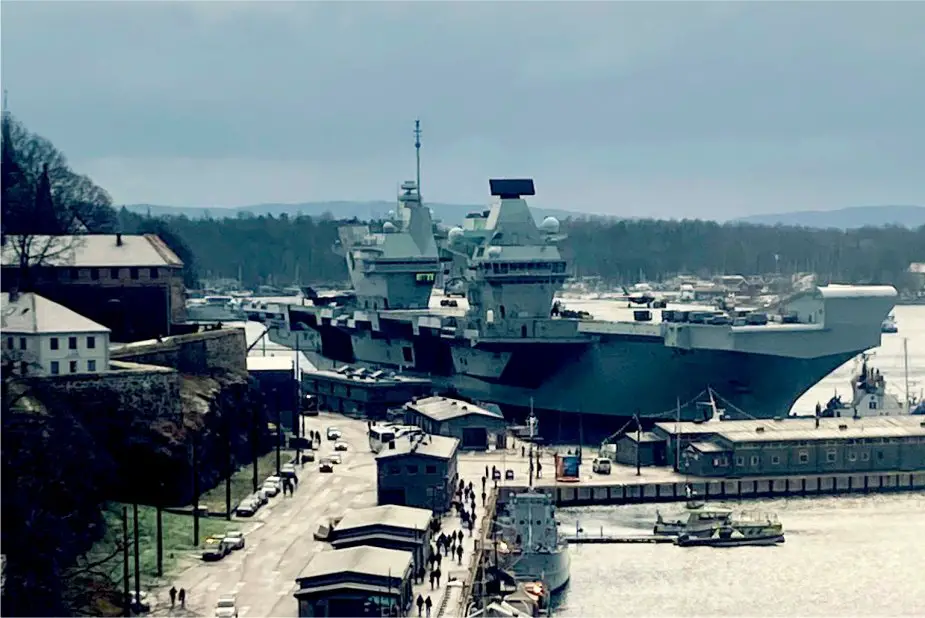Breaking news
HMS Queen Elizabeth CSG returns home after Scandinavia's deployment.
According to information published by the UK MoD on December 1, 2022, HMS Queen Elizabeth and her Carrier Strike Group have returned home after three weeks of flying operations in the North Sea and Scandinavia.
Follow Navy Recognition on Google News at this link
 Royal Navy's aircraft carrier HMS Queen Elizabeth. (Picture source: UK MoD)
Royal Navy's aircraft carrier HMS Queen Elizabeth. (Picture source: UK MoD)
HMS Diamond, HMS Kent, HMS Richmond and RFA Tidesurge formed a protective ring of steel around the aircraft carrier as jets and helicopters flew sorties round the clock, day and night.
The group stopped in Oslo, Norway’s capital, to reaffirm bonds with one of the UK’s closest NATO and Joint Expeditionary Force (JEF) allies before continuing training in the North Sea on their journey back to Portsmouth – with more fast jet pilots qualifying to operate from the carrier.
HMS Queen Elizabeth and her Strike Group made up the northern ‘arm’ of the Royal Navy’s Operation Achillean, which has also seen an amphibious task group spearheaded by HMS Albion exercising in the Mediterranean.
HMS Diamond returned to Portsmouth earlier this week but spent time attached to the aircraft carrier providing air defence. The Type 45 destroyer used her powerful array of sensors in exercises with RAF Typhoons, US Air Force F-15s and F-35As (the land-based variant of the stealth fighter), providing a great test for fighter controllers on board.
Norwegian F-35As were also in action, working with 617 Squadron’s F-35Bs in joint exercises over the North Sea, while the US Navy’s USS Paul Ignatius and French ship FS Aquitaine operated with the Strike Group, sharing information as part of the security mission.
Submarine hunters HMS Richmond and HMS Kent protected the flagship from threats beneath the waves while tanker RFA Tidesurge provided crucial support with replenishments, keeping the group fuelled and ready for action.
Meanwhile, Royal Marines of 42 Commando and Merlin helicopters from 845 Naval Air Squadron were involved in an exercise scenario – known as Joint Personnel Recovery – to rescue a downed pilot and equipment from behind enemy lines.
The helicopter squadrons were also busy. 825 Naval Air Squadron carried out winching training for search and rescue sorties, while anti-submarine warfare Merlins from 820 Naval Air Squadron worked closely with a P8 patrol aircraft from RAF Lossiemouth.
Wildcat helicopters from 815 Naval Air Squadron trained with HMS Diamond, continuing development of the anti-ship Martlet missile. There was also an appearance for Chinook helicopters from 7 Squadron from RAF Odiham as they refreshed their ability to operate with the aircraft carrier.


























